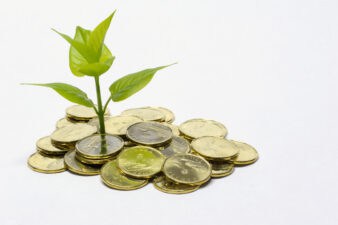The last year has been tough for gold miners and their shareholders. As the price of the precious yellow metal has plummeted, so have their share prices, with many miners reporting full-year losses for 2013. It has been no exception for Kinross Gold (TSX:K)(NYSE:KGC).
Not only did it report a net loss of U.S. $3 billion or $2.64 per share for 2014, but it also slashed its gold reserves by a third. The company’s share price is has plunged 33% over the last year, but with gold continuing to rally and Kinross taking measures to cut operational costs, there is some light at the end of the tunnel for investors.
Fourth-quarter and full-year 2013 results were worse than expected
The unexpected disappointment for investors when Kinross reported its fourth quarter and full year 2013 results earlier this month was the company slashing its gold reserves by a third.
The key drivers of this significant drop in reserves were depletion through mining, the divestment of the Ecuadoran Fruta del Norte project and the use of a fully-loaded costing methodology to calculate reserves. That leaves Kinross with gold reserves of 39.7 million ounces, which is significantly lower than Barrick Gold’s (TSX:ABX)(NYE:ABX) million 104 million ounces and Goldcorp’s (TSX:G)(NYSEGG) 54.4 million ounces.
While fourth quarter 2013 gold production slid 11% in comparison to the same quarter in 2012, total annual gold production for 2013 grew by almost 1% in comparison to 2012 to 2.6 million ounces. But this wasn’t enough to prevent 2013 revenue sliding by 12% in comparison to 2012, primarily because of softer precious metal prices.
More positively for investors, Kinross reported a fourth quarter 2013 net loss of U.S. $740 million, which was a 75% improvement over the equivalent quarter in 2012. But the full year 2013 net loss had grown by almost a fifth in comparison to 2012, the key driver of which was an after-tax non-cash impairment charge of U.S. $2.3 billion.
However, on a more pleasing note, Kinross’ all-in-sustaining-costs for 2013 had fallen by 1.5% in comparison to 2012 to U.S. $1,069 per ounce. But this does mean Kinross still has higher production costs than many of its peers. Barrick reported a 2014 all in sustaining cost of U.S. $915 per ounce, Goldcorp reported U.S. $1,031 per ounce and Yamana Gold (TSX:YRI)(NYSE:AUY) reported $947 per ounce.
With such a high all in sustaining cost, Kinross is only generating a slim margin per ounce, even with gold trading above $1,300 per ounce. Even more concerning is that Kinross has forecast 2014 all in sustaining costs of $950 to $1,050 an ounce, with the upper end of that guidance leaving little fat should gold prices fall.
2014 guidance is disappointing
Kinross expects gold production to remain flat for 2014 in comparison to 2013, with between 2.5 million to 2.7 million ounces to be produced. As a result I don’t expect Kinross to generate any significant increase in revenue for 2014 unless the price of gold continues to rally higher. While this is disappointing for investors it is unlikely Kinross’s 2014 production will decline to the same level as Barrick, which has forecast a 26% decline in production.
Furthermore, many of Kinross’ peers have released 2014 guidance estimating their gold production will ramp up significantly over 2014. Goldcorp has estimated its 2014 production will increase by 13% to 18% and Yamana has estimated an almost 8% increase in production. This will allow them to take full advantage of the rally in gold prices and generate higher revenue even if gold prices fall from current levels, unlike Kinross or Barrick.
Kinross remains attractively priced
Despite the many negatives discussed above, Kinross remains attractively priced when using its enterprise-value-to-EBITDA and comparing that to Barrick, Goldcorp and Yamana. The table also shows each company’s debt-to-EBITDA ratio, price-to-book ratio and trailing-12-month price-to-earnings ratio.
Clearly, Kinross is more attractively priced than Barrick, Goldcorp and Yamana on the basis of its lower EV-to-EBITDA and price-to-book ratios. The strength of its balance sheet is also highlighted by its relatively low level of debt in comparison to its EBITDA of 1.7 times.
Foolish bottom line
Any investment in Kinross is solely a play on the gold price and while it does appear cheap in comparison to its peers, I believe its high all in sustaining cost and flat production growth make it an unattractive investment.









